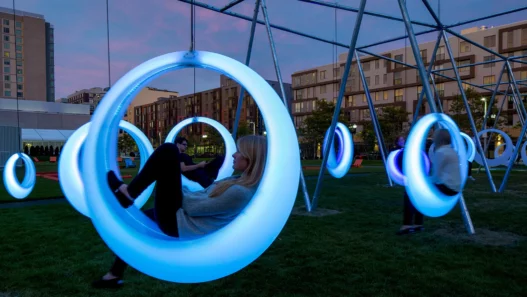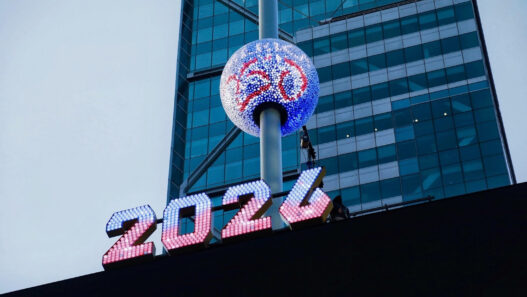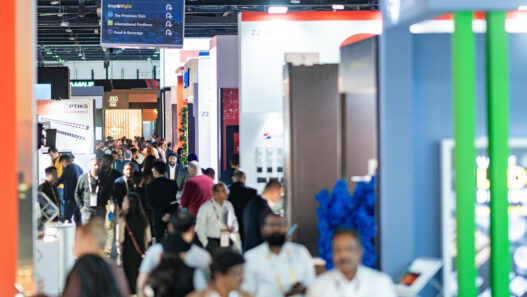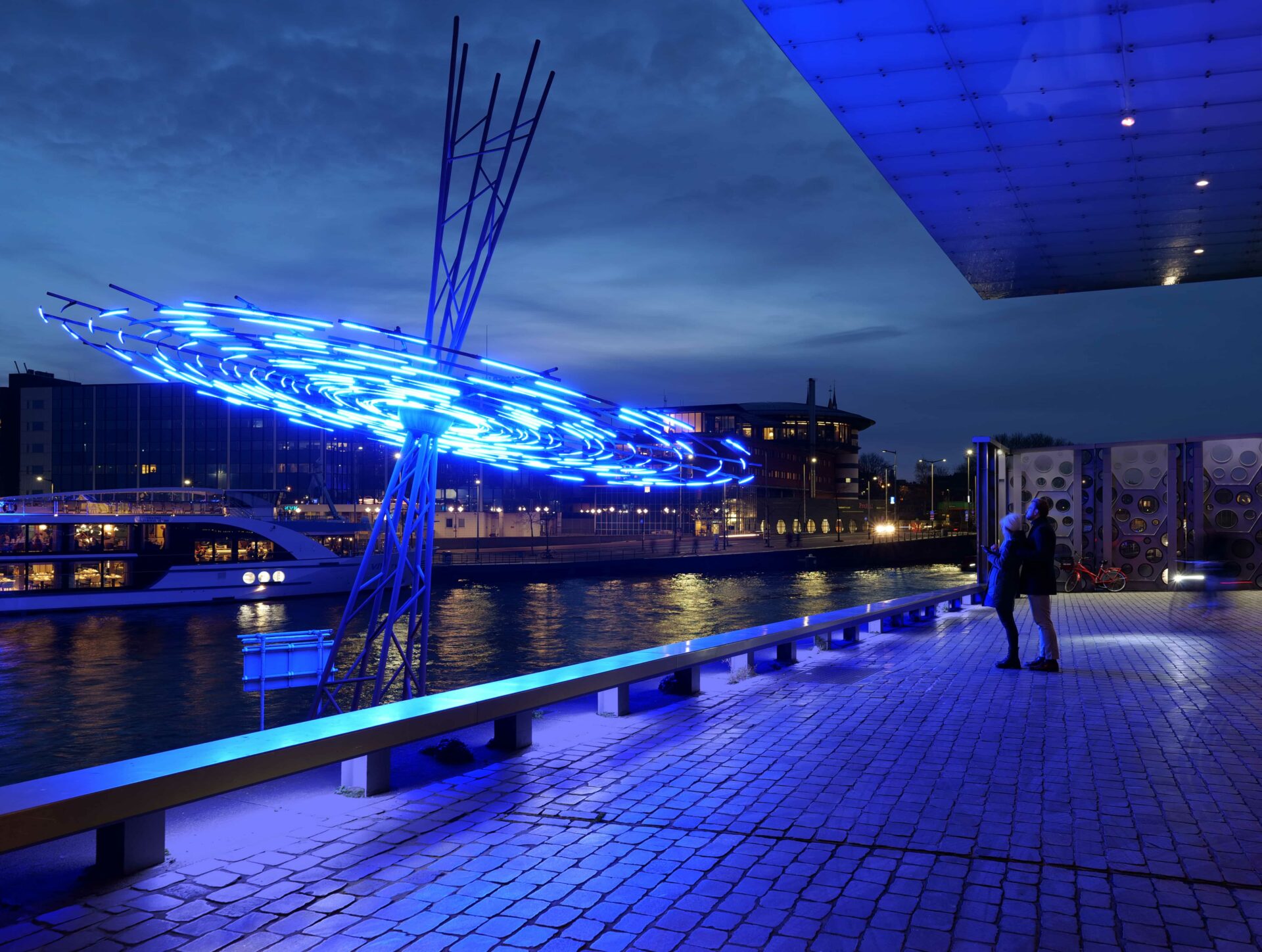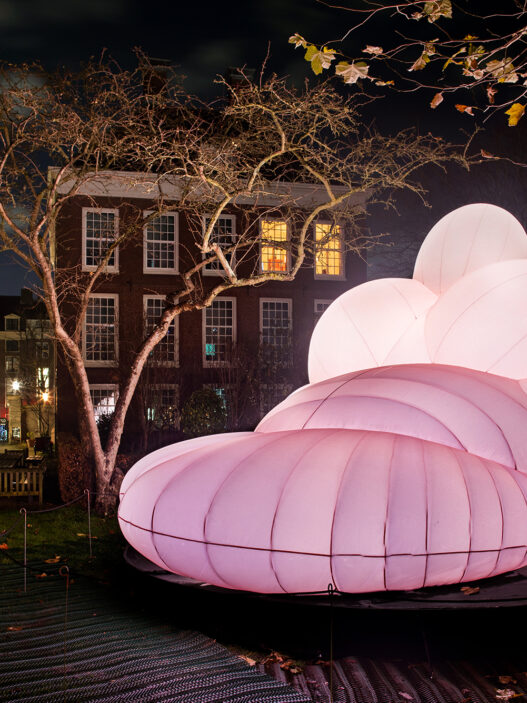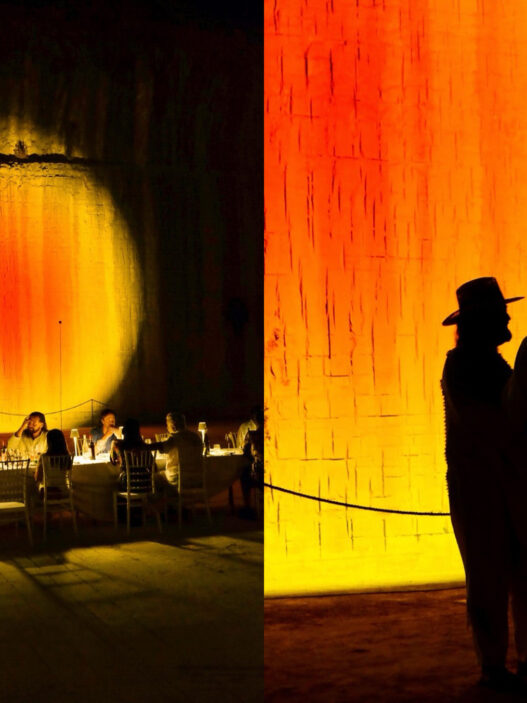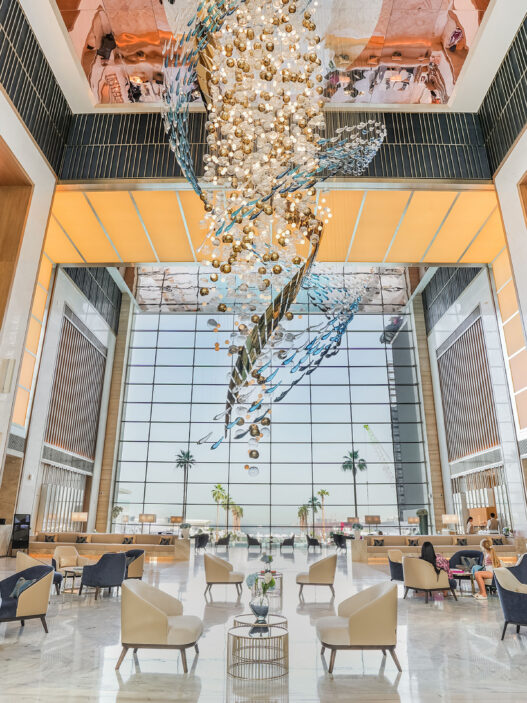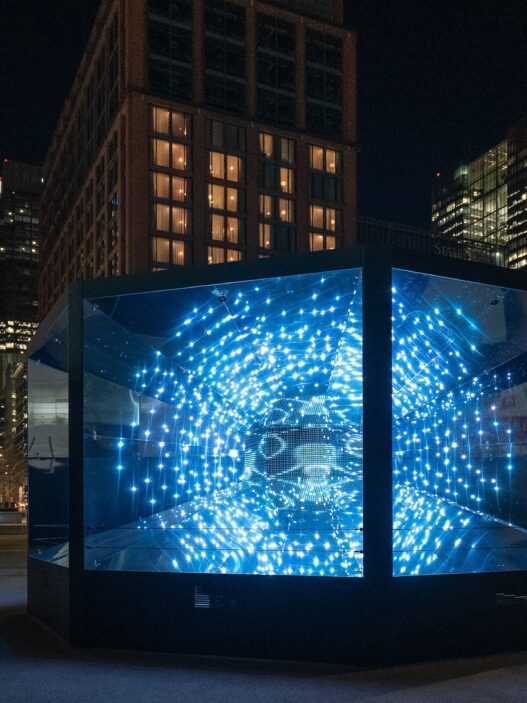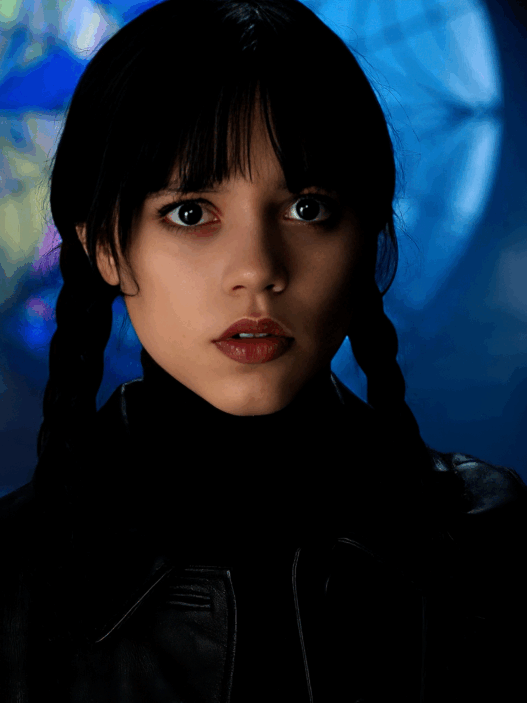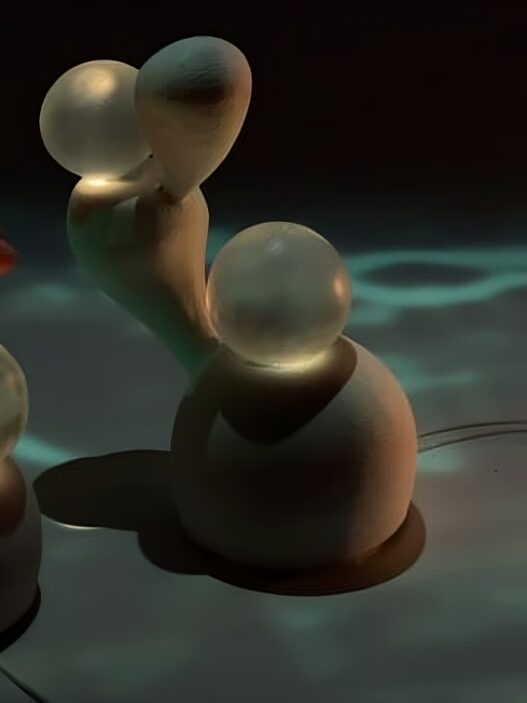Celestial Flicker in Orbit
This light installation is neither a decorative element nor a functional lighting system; it stands in the liminal space between the two where light steps away from its classical role and transforms into a behavioral medium. The designer, through a thoroughly engineered yet decentralized structure, has attempted to present a picture of organized disorder. Here, lighting modules operate independently via onboard chips without central coordination, resulting in an outcome that appears unrepeatable, asynchronous, and at the same time alive. This choice lifts the burden of control from a centralized software and distributes it across each element an approach that may seem simple on the surface but reveals a systemic mindset focused not on domination but on the behavioral capacity of light itself.
Visually, the installation asserts an undeniable presence in space. Its considerable height and horizontal spread, combined with the intense blue light, make the piece highly visible within the urban fabric even from a distance. However, this visibility doesn’t necessarily translate into spatial engagement or user interaction. Light, in this case, refrains from casting shadows or responding to surfaces; it happens only within itself. This is a fully self-referential object willing to be seen, but unwilling to communicate. Even its reflections on the water are extensions of itself rather than dialogues with the environment. This approach is neither a mistake nor a weakness, but a deliberate decision that positions the work in public space not as a “spatial tool,” but as a “spatial state” a change in condition rather than a change in utility.
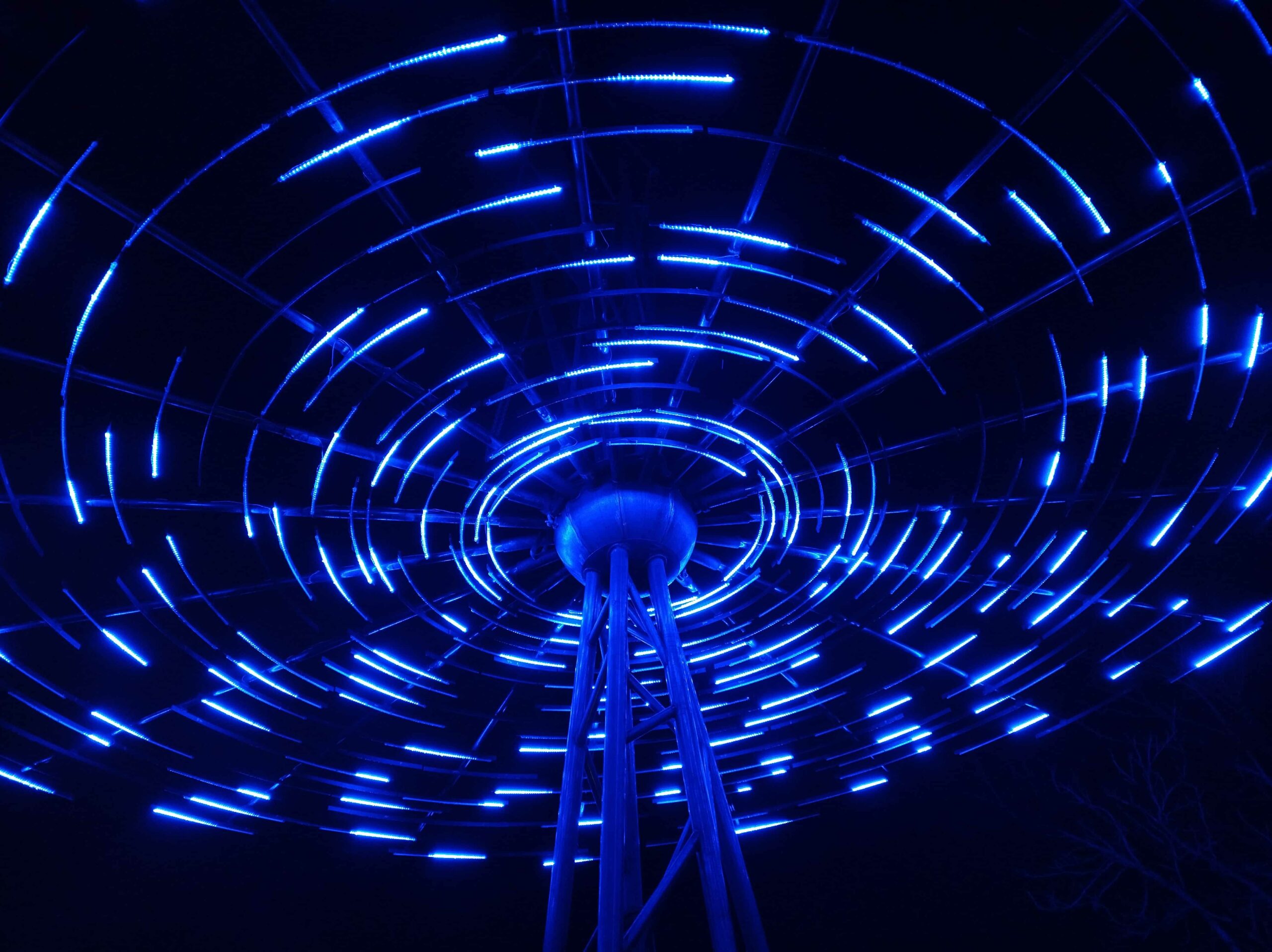
Technically, the structural quality is solid and well-contained. The steel frame is properly designed and executed, and the form composed of tubes that move both in extension and in spiral is structurally coherent. The use of standard LED tubes with onboard chips is a choice that, while economical, adds depth to behavioral control. Instead of designing a predefined lighting scenario, the designer has created an independent system for each module, establishing a kind of artificial autonomy that generates ever-changing behavioral patterns. From a lighting design standpoint, this decision elevates the installation from a “static visual role” to a “dynamic luminous condition.” Though at moments, these behaviors may feel excessive or leave the viewer suspended in a state of anticipation without meaningful progression. In such instances, the design would benefit from reconsidering the range and diversity of its luminous gestures.
Ultimately, this is not a lamp, not an illuminated structure, and not even purely a visual aesthetic experience. More than anything, it is a hypothetical mechanism for displaying probabilities a confrontation with a lighting system that seeks to escape centralized control and assert independent behavior. The idea is bold and intentional. Yet, as intelligent as it may be, in terms of creating an effective connection with its physical context, human presence, and site-specificity, it leaves room for improvement. Its design value lies in executional precision, systemic thinking, and a willingness to engage with chaos. But to become a memorable piece in the urban memory, it must offer more than its initial visual impact it must activate individual, momentary, even emotional experiences. At present, the work resembles an idea meticulously executed but not yet fully transformed into an immersive experience.
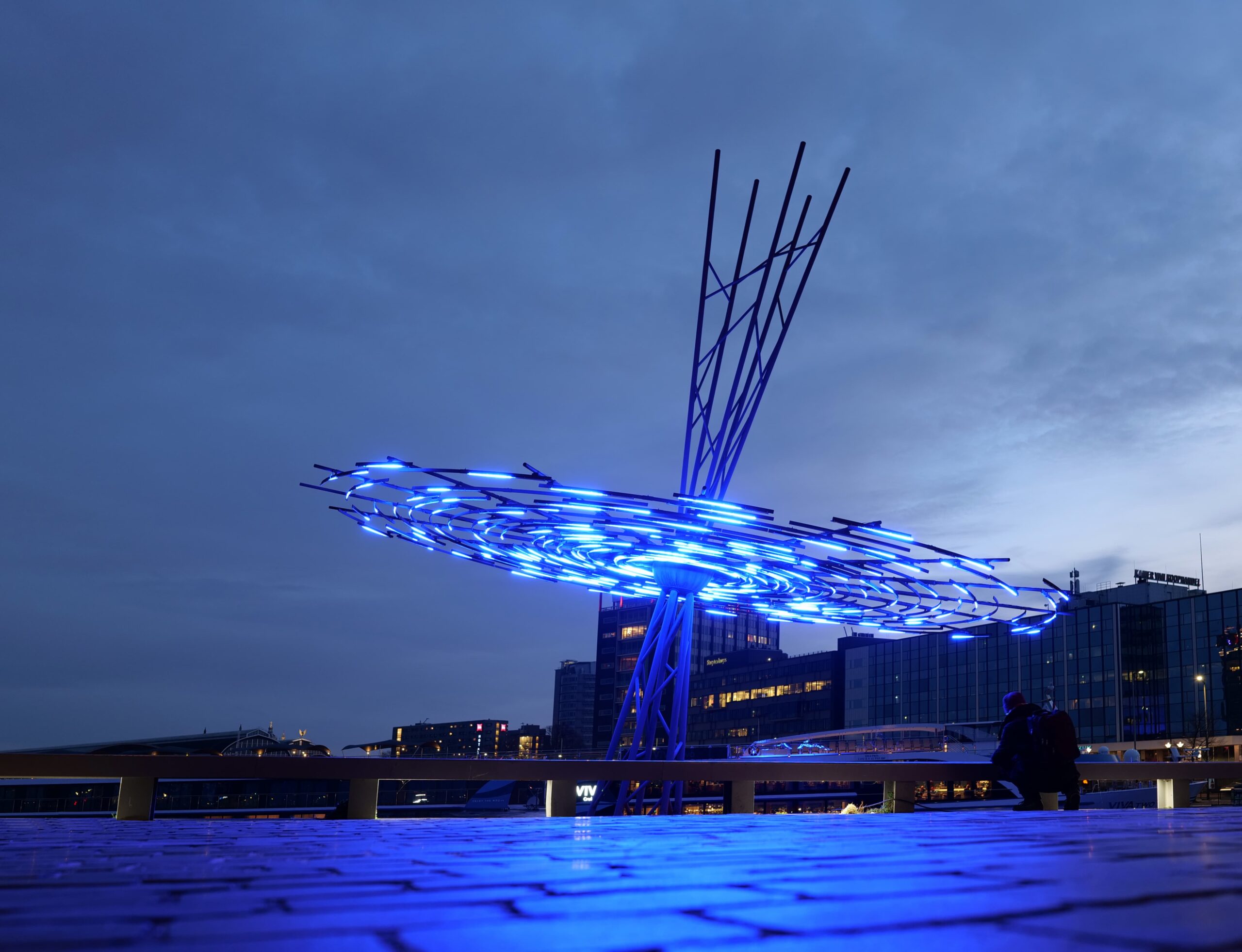
Brand : Vendel & de Wolf
Designers : Paul Vendel, Sandra de Wolf




